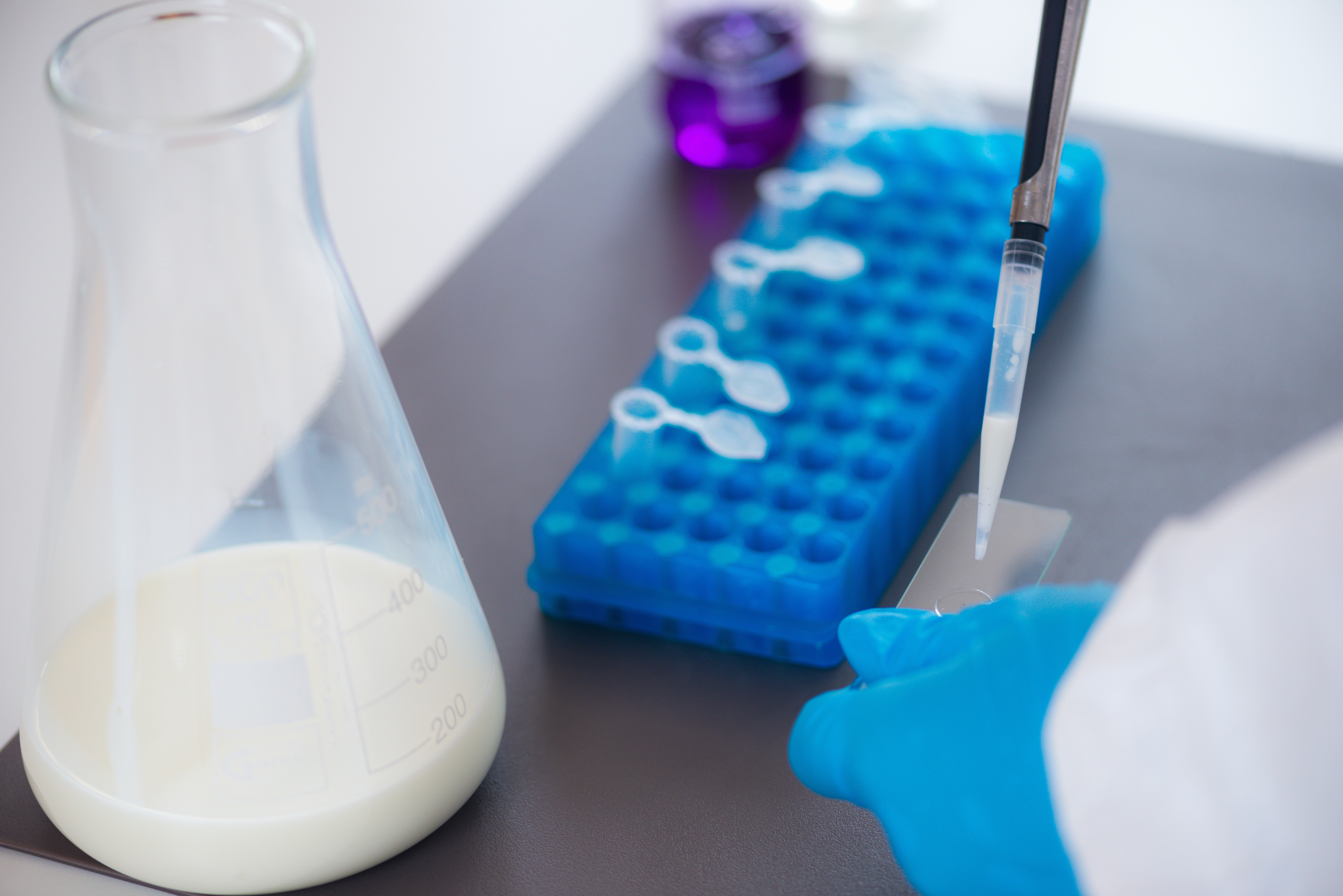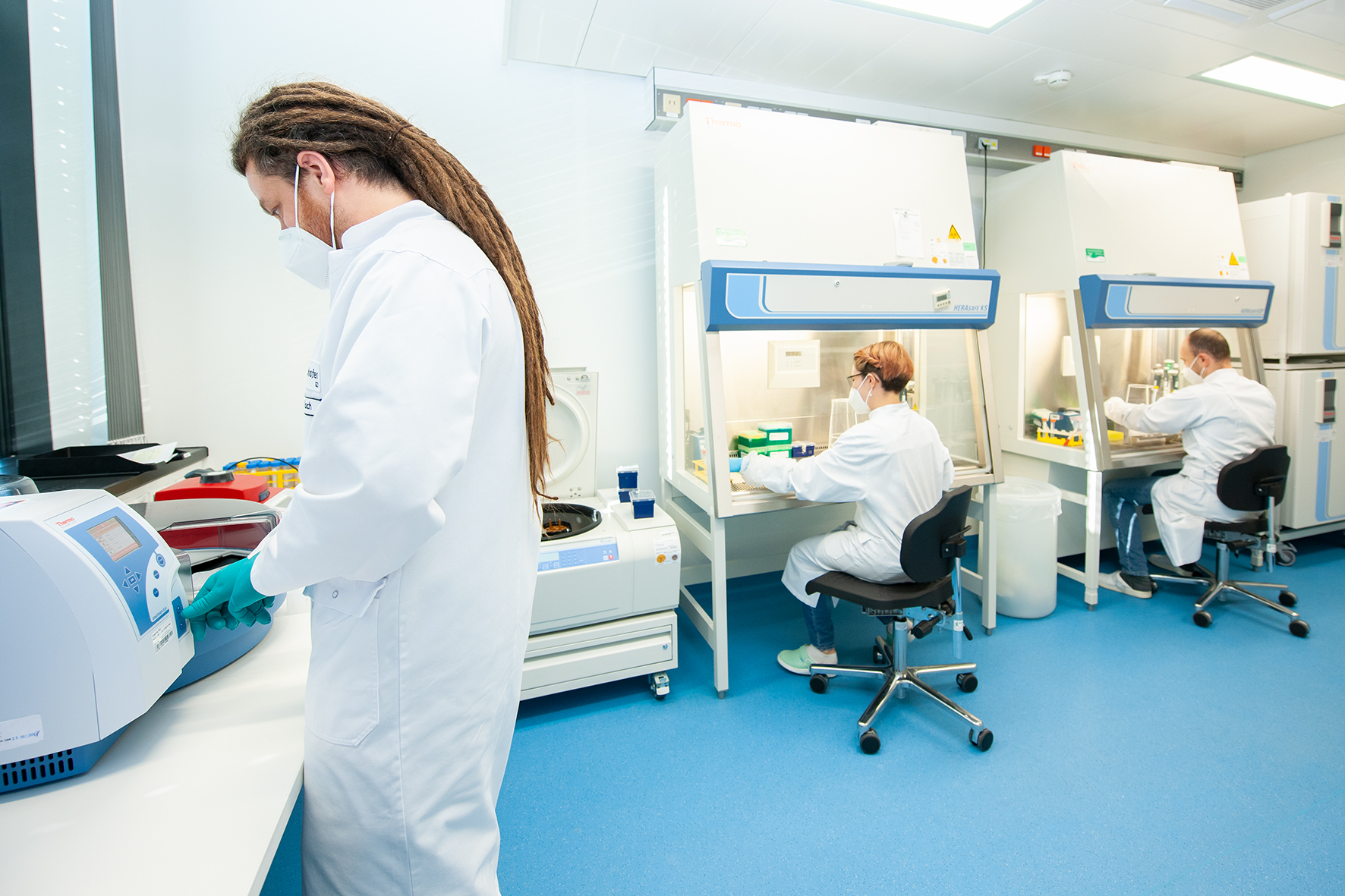Preclinical Validation
Anti-infectives from breast milk
In this project, Fraunhofer IZI and Primogene GmbH are collaborating to develop innovative strategies for the prevention and treatment of infectious diseases, with a particular emphasis on respiratory syncytial virus (RSV) and sepsis caused by bacterial infections. The goal is to enhance protection for vulnerable populations, including infants, premature babies, the elderly, and immunocompromised individuals.
The project centers on bioactive components derived from human breast milk, such as human milk oligosaccharides (HMOs). These natural compounds possess antimicrobial, antiviral, anti-inflammatory, and immunomodulatory properties, which can significantly support the immune system of infants.
The Preclinical Validation working group brings extensive expertise in the development and characterization of bioactive substances. Initially, the focus will be on identifying promising new active compounds using cell-based in vitro systems, followed by validating their efficacy and safety in established in vivo infection models. Additionally, Primogene GmbH contributes its knowledge in the biotechnological production and purification of natural milk components.
The long-term objective is to create milk-based active ingredients that can be utilized not only in traditional infant nutrition but also in medical applications, such as the treatment or prevention of respiratory diseases and sepsis.
Partner
Primogene GmbH
Funding
This project is funded by the Saxon State Ministry of Economic Affairs, Labour, Energy and Climate Protection (SWMA) with resources from the Free State of Saxony and the European Union (European Regional Development Fund ERDF).
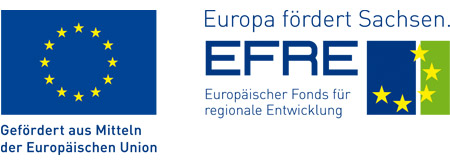
MELLIPA – LEEI inactivated parasites applied mucosally to treat allergies
Allergies have been increasing in the industrialized nations for decades. In this context, the decline in the number of parasite-borne infectious diseases is being discussed as a possible contributory factor. This hypothesis is based on similarities in the activation of the immune system. In allergic reactions, the immune system is wrongly activated by harmless environmental antigens and auto-antigens. This activation is specifically effected via Th2 immune cells, which, for example, stimulate antibody-producing B cells to produce IgE antibodies. These reactions largely correspond to those involved in the immune response to extracellular pathogens, such as parasites. In this case too, the immune system is activated via Th2 immune cells and IgE antibodies.
As a result, the permanent absence of parasitic infections might lead to a shift in the evolutionary balance between the Th1- and Th2-mediated immune responses and, as a result, to an errant immune response to harmless antigens.
In line with this theory, one therapeutic approach aims to re-establish the natural balance between the Th1- and Th2-mediated immune responses by administering parasitic antigens. However, the administration of active / living material is highly problematic in terms of safety, and difficult to justify as a treatment, even if the parasites are harmless to humans.
The MELLIPA project examines the suitability of inactivated parasites for allergy prevention. To achieve this, the parasites are inactivated using low energy electron inactivation (LEEI) and then formulated. Irradiation destroys the parasites’ genetic material (DNA); however, it preserves the immunologically relevant surface materials. This ensures that the parasite preparation no longer has any infectious or pathogenic potential, while retaining a sufficient immunostimulatory effect. Its effectiveness is evaluated in an animal model (mouse) in which the drug is nasally applied via the mucous membrane.
The project focuses on the Toxoplasma gondii parasite whose native cellular material is highly active against various allergies and which is administered mucosally after LEEI inactivation.
Partners
Fraunhofer ITEM; Fraunhofer ITMP; Fraunhofer IAP; Fraunhofer FEP; Fraunhofer IPA
Support
This project is financed as part of the Fraunhofer Cluster of Excellence for Immune-Mediated Diseases (CIMD).
MinAAVAb – AAV-mediated expression of therapeutic antibodies via minimally invasive application
Antibody treatments have been established to treat various diseases, such as autoimmune disorders, tumors, and infections. However, long-term and lastingly effective treatment based on the systemic administration of functional antibodies involves high costs for healthcare systems.
Adeno-associated viral vectors (AAV) constitute a potential alternative. They can be used to introduce therapeutic genes into target cells. They do not cause any illness; they infect specific cell types and are not incorporated into the human genome. These characteristics make them a safe and effective vector for genetic therapy. After successful transduction (integration into the target cells), AAV containing the blueprint for therapeutic antibodies can be permanently produced by the human body.
The project aims to develop and evaluate novel, minimally invasive forms of application for AAV-based medications. As part of the proof-of-concept study, the AAV will be optimized and used to express therapeutic antibodies.
Partners
Fraunhofer ITEM; Fraunhofer ITMP; Hanover Medical School (MHH)
Support
This project is financed as part of the Fraunhofer Cluster of Excellence for Immune-Mediated Diseases (CIMD).
Drug Repurposing
It takes a lot of time and money to develop new drugs. Drug candidates are identified for a particular indication based on findings from foundational research, which can take decades to evolve. These are first examined in great detail as to their efficacy and, above all, safety in various cell culture and animal models during the preclinical development phase. Only the few drug candidates whose benefit-risk profile justify being tested on human subjects make it into clinical development, where they are tested first on healthy subjects (phase I), then in smaller patient cohorts (phase II) and finally in trials involving as many patients as possible (phase III) before an application can be made for approval in the indication concerned.
In the case of drug repurposing, medicines which are already approved are tested for their suitability and possible applications in other indications. A prerequisite here is a thorough understanding of the disease mechanisms at a molecular and cellular level on the one hand and the precise characterization of the medicine’s principles of action on the other. If corresponding parallels are identified in different indications, it is worth taking development steps to expand the medicine’s area of application. This approach to medicine development is extremely efficient and takes much less time and effort as it can build on existing data and observations.
The REMEDI4ALL project plans to develop a Europe-wide competence platform to support European research institutes with drug repurposing in the future.
Fraunhofer IZI is contributing its competences in infection research to the consortium and will investigate the suitability of a previously approved oncology medicine for its application in the case of COVID-19 diseases.
The REMEDI4ALL consortium comprises 24 partners and will be supported over a number of years with funding in the value of 23 million euros from the European Union’s Horizon Europe research and innovation program under grant agreement ID 101057442.
RNAuto
Establishing suitable in vivo models and validation of mRNA-based drug candidates as vaccines against the West Nile virus (WNV) as part of the Fraunhofer lead project RNAuto.
ImSavar

Examination of immunomodulatory therapies with regard to an increased risk of infection as part of the EU project ImSavar.
Specifically, as part of the sub-project, a low-dose IL-2 treatment against systemic lupus erythematosus is examined in an animal model with regard to the virus susceptibility towards influenza A and RSV. Moreover, an in vitro assay will be established to provide indications as to whether the anti-viral immune response is changed by the treatment tested.
MucoRSV
The respiratory syncytial virus (RSV) is one of the main causes of acute infections of the lower respiratory tract in older people and children. In addition to vaccines administered via intramuscular injections, non-invasive vaccinations applied (mucosally) via the respiratory tract provide an alternative against viruses affecting the respiratory tract, such as RSV. Various projects have shown that the local immune response induced by mucosal vaccines triggers the fast and efficient elimination of respiratory viruses after a natural infection.
Moreover, the suitability of low energy electron irradiation (LEEI) for the production of vaccines was evaluated. Low energy electron irradiation successfully inactivated RSV and is formulated with phosphatidylcholin liposomes (PC-LEEI-RSV) or 1,2-dioleoyl-3-trimethylammonium propane and 1,2-dioleoyl-sn-glycero-3 phosphoethanolamin (DD-LEEI-RSV) for intranasal vaccinations of mice. RSV-specific IgA antibodies and a statistically significant reduction in the virus load after provocation were proven, in particular, in animals (mucosally) DD LEEI RSV vaccinated.
Publications
- Eberlein V, Rosencrantz S, Finkensieper J, Besecke JK, Mansuroglu Y, Kamp JC, Lange F, Dressman J, Schopf S, Hesse C, Thoma M, Fertey J, Ulbert S, Grunwald T. Mucosal immunization with a low-energy electron inactivated respiratory syncytial virus vaccine protects mice without Th2 immune bias. Front Immunol. 2024 Apr 5;15:1382318. doi: 10.3389/fimmu.2024.1382318. PMID: 38646538; PMCID: PMC11026718.
- Eberlein V, Ahrends M, Bayer L, Finkensieper J, Besecke JK, Mansuroglu Y, Standfest B, Lange F, Schopf S, Thoma M, Dressman J, Hesse C, Ulbert S, Grunwald T. Mucosal Application of a Low-Energy Electron Inactivated Respiratory Syncytial Virus Vaccine Shows Protective Efficacy in an Animal Model. Viruses. 2023 Aug 30;15(9):1846. doi: 10.3390/v15091846. PMID: 37766253; PMCID: PMC10535182.
RSV-Protect
In healthy adults, the respiratory syncytial virus (RSV) is usually harmless; however, it poses a serious risk to infants, older adults, and patients with an impaired immune system. In addition, RSV has a disproportionate impact within densely populated developing countries, such as India or China, and constitutes a growing risk globally. It is estimated to cause more than 200,000 deaths among infants and toddlers every year.
The RSV Protect project examined various agents which impair the virus’ ability to enter and infect the host cells.
To this end, several small peptides (with less than 15 amino acids and more than 100 times smaller than a typical antibody) were produced with the aim of “locking” the virus’ main fusion protein, RSV-F, in a configuration preventing the virus from injecting its genetic material into the host cell. In micromolar concentrations, the peptides examined were effective at preventing RSV infections - both in cellular model systems and in the animal model. Moreover, the generation of molecular trivalent DNA peptide structures reinforced the protective effect by 200 times in the cell model.
The strongest inhibitor had a potent selectivity index of 3,742 and achieved a considerable reduction in the virus load in the lungs of mice after intranasal administration. In addition, the compound showed an inhibitory effect against SARS-CoV-2 comparable to the effect observed on RSV. These results suggest that the molecule identified is a suitable candidate for further preclinical development and evaluation as an antiviral agent against RSV and, possibly, other viruses.
Publications
- Grunwald T, Issmail L, Ramsbeck D, Kleinschmidt M, Jäger C, Buchholz M, Smith D, Möser C. Broad-spectrum antiviral drugs. WO2023281063A1, 2022.
- Smith D, Möser C, Grunwald T, Issmail L, Jäger C, Kleinschmidt M, Ramsbeck D, Buchholz M. Biological and synthetic molecules inhibiting respiratory syncytial virus infection. WO2020212576A1, 2020.
- Issmail L, Ramsbeck D, Jäger C, Henning T, Kleinschmidt M, Buchholz M, Grunwald T. Identification and evaluation of a novel tribenzamide derivative as an inhibitor targeting the entry of the respiratory syncytial virus. Antiviral Res. 2023 Mar;211:105547. doi: 10.1016/j.antiviral.2023.105547
- Issmail L, Möser C, Jäger C, Altattan B, Ramsbeck D, Kleinschmidt M, Buchholz M, Smith D, Grunwald T. Prefusion-specific antibody-derived peptides trivalently presented on DNA-nanoscaffolds as an innovative strategy against RSV entry. Frontiers in Virology. 2022;2. doi: 10.3389/fviro.2022.994843
TheraVision
The TheraVision project has developed a versatile platform technology for a combined oncolytic virus and immunotherapy.
On the basis of an attenuated herpes simplex virus type 1 (HSV1), a vector which also codes for a functional immune checkpoint inhibitor was developed. As a result, both virally mediated oncolysis and immune cell-mediated therapy were induced.
Safety and functionality were validated in innovative preclinical models ranging from patient-derived organoids to human in vitro 3D tumor models and complex humanized mouse models. Therefore, a novel and proprietary engineering platform vector based on HSV1 is now available for the efficient preclinical development of oncolytic virus therapy.
Publication
- Funk C, Uhlig N, Ruzsics Z, Baur F, Peindl M, Nietzer S, Epting K, Vacun G, Dandekar G, Botteron C, Werno C, Grunwald T, Bailer SM. TheraVision: Engineering platform technology for the development of oncolytic viruses based on herpes simplex virus type 1. Mol Ther Oncol. 2024 Feb 28;32(1):200784. doi: 10.1016/j.omton.2024.200784. eCollection 2024 Mar 21.
Establishing a rabbit model to examine propofol infusion syndrome
A study on the clinical propofol infusion syndrome (PRIS) tested two propofol formulations of an industry partner compared to the control substance, isoflurane. Under long-term anesthesia with propofol, the animals developed PRIS syndrome, which was accompanied by changes in various clinical parameters. The increase in the troponin T serum level compared to the control group was significant. As a result, troponin T, a general biomarker for cardiovascular damage might form a potential standard biomarker for clinical PRIS.
Non-human papilloma viruses for in vitro and in vivo DNA transmission
Papilloma virus capsids can package DNA plasmids and transfer them both in vitro and in vivo. Although human papilloma viruses (HPV) are suitable as gene transfer vectors, their use is limited since most people have either been exposed to the virus through an HPV vaccination or a natural infection and, as a result, have developed immune resistance against HPV. In order to avoid these restrictions, pseudovirions of ten non-human papilloma virus types have been created and their transduction efficiency has been tested in vitro. In addition, pseudovirions based on a monkey papilloma virus (Macaca fascicularis papilloma virus 11) or puma papilloma virus (Puma concolor papilloma virus 1) have been tested in vivo. Intramuscular transduction by these candidates led to expression lasting months, suggesting their suitability as vector for the transfer of therapeutic genes.
Publication
- Bayer L, Gümpel J, Hause G, Müller M, Grunwald T. Non-human papillomaviruses for gene delivery in vitro and in vivo. PLoS One. 2018 Jun 18;13(6):e0198996. doi: 10.1371/journal.pone.0198996
Mature NK
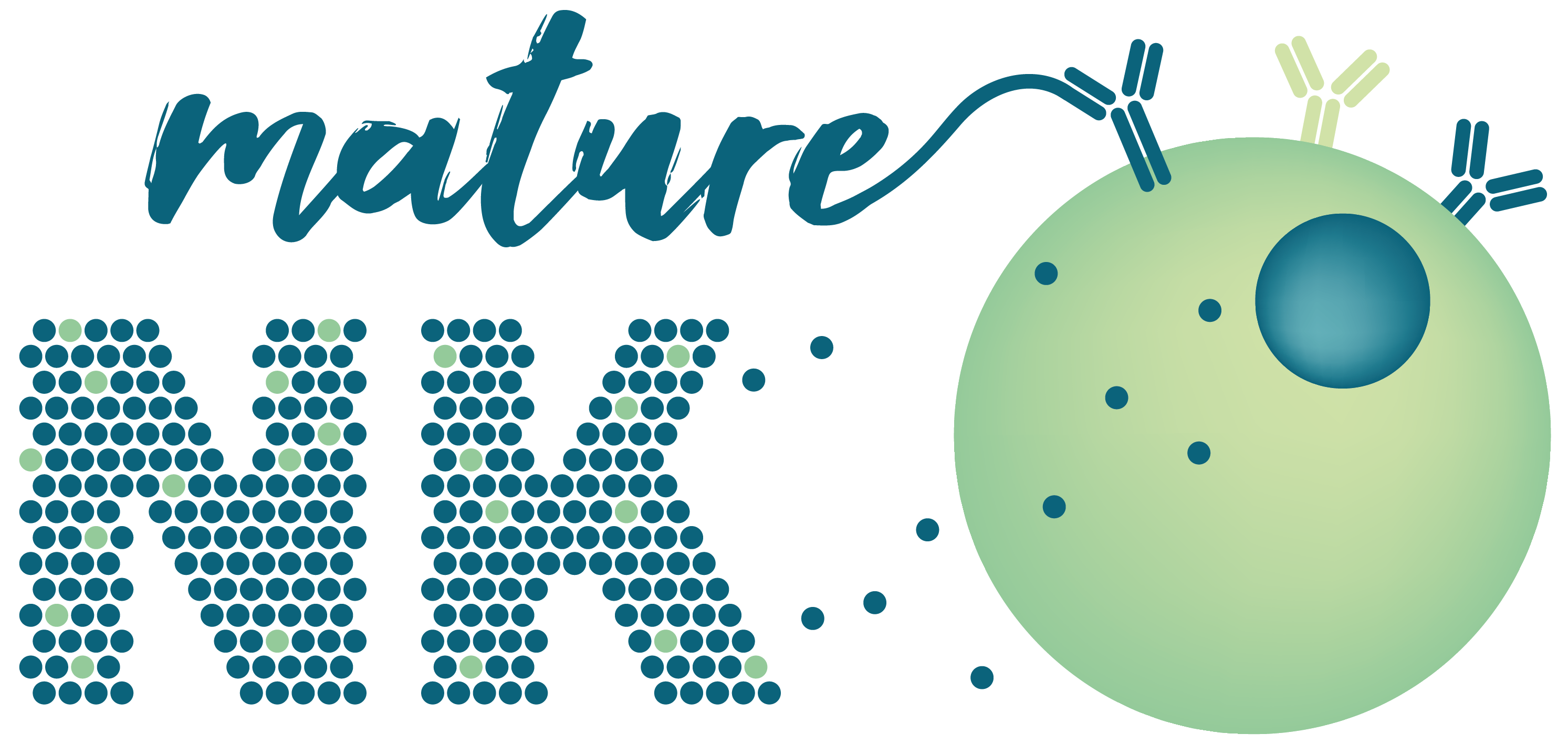
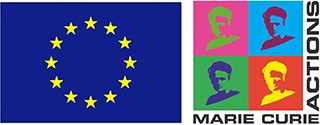
As part of the MATURE NK project, future-oriented training was offered to doctoral students in translational research. As one of 14 partners in the consortium, Fraunhofer IZI focused on the development of a CAR NK cell-based treatment against head and neck squamous cell carcinoma (HNSCC).
Based on primary NK cells obtained from the peripheral blood of healthy donors, CAR NK cells aimed at CD44v6 were generated with the help of gamma retroviruses. Their functionality has been tested both in vitro and in mouse models. In vitro, the CAR NK cells showed a killing efficacy compared with various HNSCC cell lines which was twice or three times higher than the control group. In vivo, a single dose of primary NK or CAR NK cells significantly reduced tumor growth compared to the PBS-treated control group.
Publication
- Ciulean IS, Fischer J, Quaiser A, Bach C, Abken H, Tretbar US, Fricke S, Koehl U, Schmiedel D, Grunwald T. CD44v6 specific CAR-NK cells for targeted immunotherapy of head and neck squamous cell carcinoma. Front Immunol. 2023 Nov 10;14:1290488. doi: 10.3389/fimmu.2023.1290488
Website
Under the lens: microscopic footage of anti-CD44v6 CAR-NK-92 interactions with the UT-SCC-14 cell line. A dynamic interaction taken in a 5 h co-culture of UT-SCC-14 target cells and CAR-NK-92 effector cells (green, FITC). The Incucyte® Cytotox NIR Dye was used as an indicator for dying and/or dead cells (red, NIR). Imagines were captured with a 20 X OB every 2 minutes. EGFP+ CAR-NK-92 cells actively engage with UT-SCC-14 target cells and apoptosis induction is evidence by the occurrence of cell membrane blebbing and the color red as a clear indicator of cell death. (Experiment by Sonya Ioana Ciulean)
CoroVacc – Development of a Sars-CoV-2-specific vaccine based on Herpes viruses
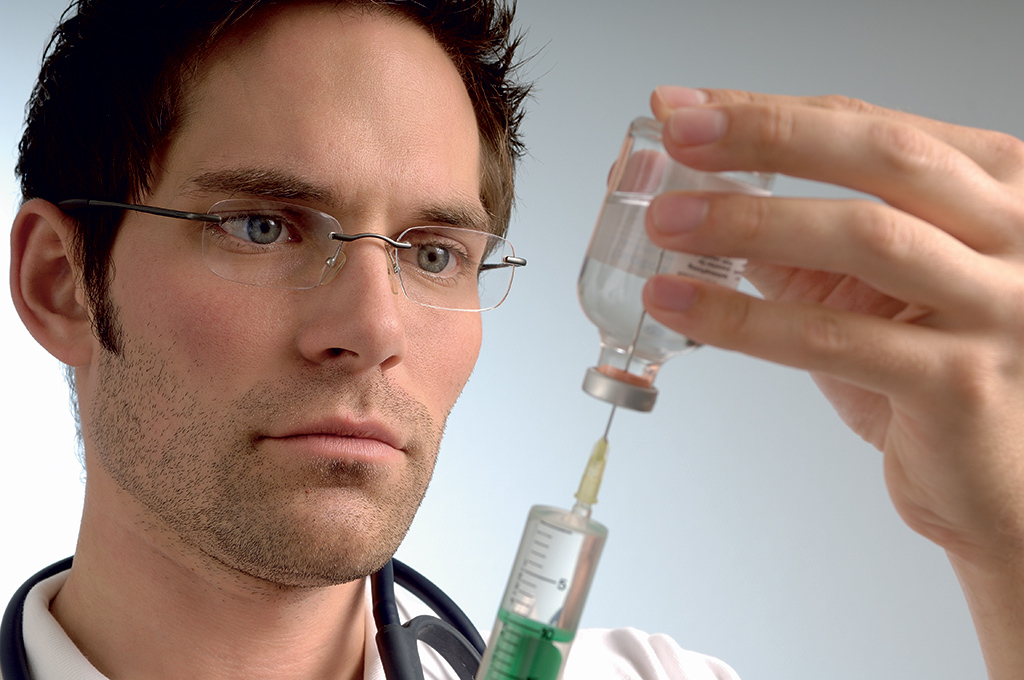
Over recent decades, vaccines, which are by far the most effective preventative measure against infectious diseases, have contributed decisively to the reduction of illnesses and even the eradication of pathogens. Vaccines based on attenuated viruses, in particular, are highly effective since they induce both aspects of the immune response – on the one hand, the humoral aspect through the production of pathogen-specific antibodies and, on the other hand, the cellular aspects through the T cell-mediated immune response.
The Corona pandemic is highlighting the fundamental importance of the fast development of effective vaccines for new pathogens. In the framework of the CoroVacc project, a Sars-CoV-2-specific vaccine virus based on an established platform vector (herpes virus derivative) should be developed. The developed platform technology can quickly adapt the herpes virus vectors on a modular basis. The HSV-based vaccines were initially evaluated for the growth and expression of the SARS-CoV-2 epitopes. As a next step, immunization will be analysed.
Partner
Fraunhofer Institute for Interfacial Engineering and Biotechnology IGBSupport
This work was supported by the Fraunhofer InternaI Programs under Grant No. Anti-Corona 840234.DEFEND-CoV2 – Testing of vaccines and active agents against SARS-CoV-2

In the framework of the DEFEND-CoV2 project, an infrastructure for testing and evaluating vaccines and active agents against SARS-CoV-2 is to be created with the aim of giving, in particular, smaller companies and academic institutions without S3 resources, the possibility to quickly test their candidates and to validate these in comparison with other technologies. At the same time, Fraunhofer’s own efforts to develop vaccines and active agents are being promoted. In this process, the focus is on proprietary vaccine candidates consisting of inactivated pathogens, nucleic acids and vector vaccines. In this context, (intranasal) application through the airways is considered as an important method since a local and, therefore, potent effectiveness can be established at the virus’s point of entry.
In order to be ready for the current as well as for future virus pandemics, the Department of Vaccines and Infection Models and the Department of GMP Process Development / ATMP Design of the Fraunhofer Institute for Cell Therapy and Immunology IZI are working to build a vaccine and active agent pipeline in the DEFEND-CoV2 project. This should also facilitate fast production for preclinical testing and the further clinical development under GMP (Good Manufacturing Practice). As a result, developers can be offered the entire value chain from preclinical testing to the production of the first clinical test specimen. This is particularly important for fast tracking as demanded by the World Health Organisation (WHO) for pandemics.
Support
This work was supported by the Fraunhofer InternaI Programs under Grant No. Anti-Corona 131-600010.CoVER-Ab – Human antibodies against SARS-CoV-2 for COVID-19 prevention and treatment
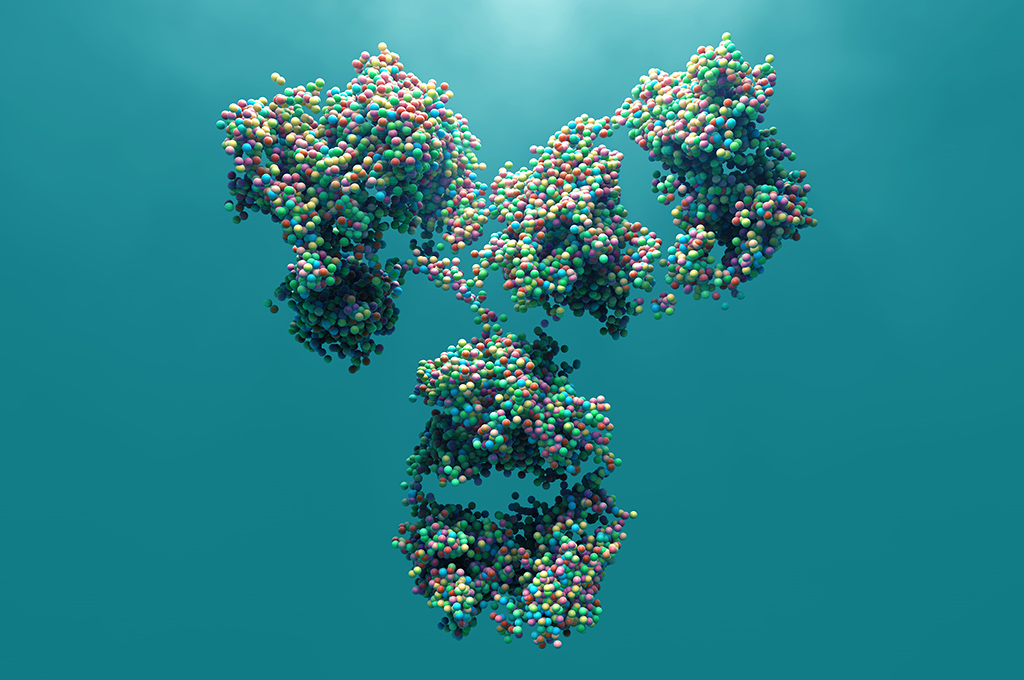
![BMBF_CMYK_Gef_M [Konvertiert]](/en/departments/leipzig-location/infection-research-diagnostics/preclinical-validation/projects/jcr:content/contentPar/faq/faqComponentParsys/faqitem_1318007738/faqpar/textwithinlinedimage/imageComponent2/image.img.jpg/1726834663308/BMBF-gefoerdert-2017-en.jpg)
In the framework of the CoVER-Ab project, human monoclonal and neutralising antibodies against SARS-CoV-2 are to be extracted initially. These antibodies are then checked for their anti-viral effectiveness in cell cultures and a selection of these is then examined for effectiveness and safety in a transgenic mouse model and a rhesus monkey model.
The Preclinical Validation Unit has established the infection model with human ACE-2 transgenic mice. Various doses of SARS-CoV-2 were used for this. During subsequent efficacy and safety testing, the neutralising antibodies were administered either before (prophylaxis) or after (therapy) the infection. It has been shown that these neutralising antibodies substantially reduced virus replication. The data were published in the European Journal of Immunology: Peter AS, Roth E, Schulz SR, et al. A pair of noncompeting neutralizing human monoclonal antibodies protecting from disease in a SARS-CoV-2 infection model. Eur. J. Immunol. (2022). doi: 10.1002/eji.202149374
Partners
Friedrich Alexander University of Erlangen-Nürnberg (FAU); Universitätsklinikum Erlangen (UKER); German Primate Center (DPZ), Leibniz Institute for Primate ResearchPress release of FAU about CoVER-Ab
Press information, April 23, 2020: FAU scientists are working on a vaccine against Covid-19Support
German Federal Ministry of Education and Research (BMBF).SENSE-CoV2 – Analysis of the innate immune recognition of SARS-CoV-2 using recombinant viruses
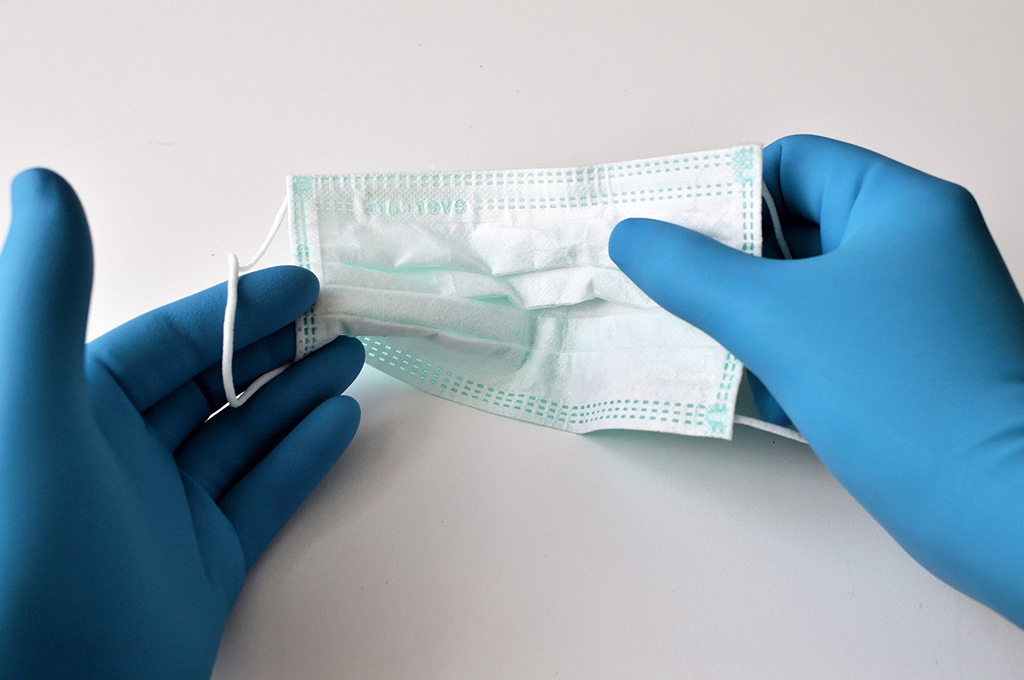
![BMBF_CMYK_Gef_M [Konvertiert]](/en/departments/leipzig-location/infection-research-diagnostics/preclinical-validation/projects/jcr:content/contentPar/faq/faqComponentParsys/faqitem_207904482/faqpar/textwithinlinedimage/imageComponent2/image.img.jpg/1726834750526/BMBF-gefoerdert-2017-en.jpg)
Containment of the corona pandemic is hampered by a significant proportion of infected persons showing very few or no symptoms. The fact that SARS-CoV-2 is able to multiply without signs of inflammation suggests that innate immune control against SARS-CoV-2 may be deregulated and less effective.
Within the framework of the SENSE-CoV2 project the research team aims to characterize mechanisms that enable SARS-CoV-2 to escape detection by the human innate immune system.
The identification of viral proteins that prevent early immune control and their characterization in infection experiments will provide important foundations and new target structures for a possible development of antiviral drugs aiming at improved control of the virus by the innate immune system.
Partner
Friedrich Alexander University of Erlangen-Nürnberg (FAU)
Support
German Federal Ministry of Education and Research (BMBF)
